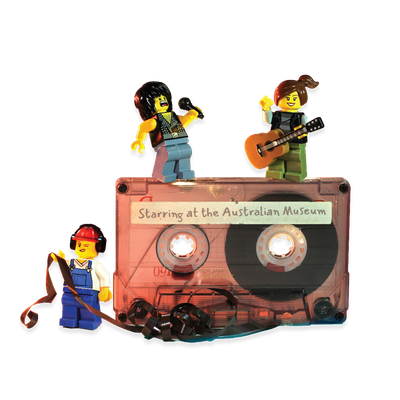Your search returned 41 results
By Page Type
By Tag
- All
- fish (966)
- blog (696)
- fishes of sydney harbour (401)
- First Nations (299)
- Blog (236)
- AMRI (169)
- archives (164)
- Eureka Prizes (146)
- Aboriginal and Torres Strait Islander (135)
- insect (126)
- Ichthyology (124)
- geoscience (109)
- minerals (102)
- climate change (99)
- podcast (94)
- Fish (91)
- Anthropology (89)
- International collections (80)
- Minerals Gallery (78)
- wildlife of sydney (78)
- Labridae (77)
- frog (74)
- gemstone (70)
- photography (66)
- history (64)
- Mollusca (60)
- gem (59)
- staff (59)
- Birds (56)
- Gems (56)
- Indonesia (56)
- education (56)
- shark (55)
- AMplify (54)
- people (53)
- earth sciences (50)
- exhibition (50)
- past exhibitions (50)
- Gobiidae (48)
- sustainability (46)
- Pomacentridae (45)
- Serranidae (44)
- lifelong learning (42)
- science (42)
- Earth and Environmental Science (41)
- Syngnathidae (41)
- Ancient Egypt (40)
- Bali (40)
- bird (40)
- dangerous australians (40)
-
Meteors and Meteorites
https://australian.museum/learn/minerals/shaping-earth/meteors-and-meteorites/Solid pieces of extraterrestrial debris (meteoroids) can stray from their orbits in outer space and be captured by Earth's gravity.
-
Classification of sedimentary rocks
https://australian.museum/learn/minerals/shaping-earth/classification-of-sedimentary-rocks/Sedimentary rocks are classified according to the predominant grain size present, as well as by their mineral content.
-
Mineral properties
https://australian.museum/learn/minerals/properties/Minerals can be identified using a number of properties. These include physical and chemical properties such as hardness, density, cleavage and colour, crystallography, electrical conductivity, magnetism, radioactivity and fluorescence.
-
Geological ore deposits
https://australian.museum/learn/minerals/geological-deposits/geological-ore-deposits/Geological ore deposits are of many different types and occur in all geological environments.
-
Types of metamorphism
https://australian.museum/learn/minerals/shaping-earth/types-of-metamorphism/There are several different types of metamorphism, including dynamic, contact, regional, and retrogressive metamorphism, that form and shape rocks.
-
The Sydney Basin
https://australian.museum/learn/minerals/shaping-earth/the-sydney-basin/The Sydney Basin is a major structural basin containing a thick Permian-Triassic (290 Ma - 200 Ma (million years old)) sedimentary sequence that is part of the much larger Sydney-Gunnedah-Bowen Basin.
-
Shaping the Earth
https://australian.museum/learn/minerals/shaping-earth/What makes the Earth unique? Where does it fit in the Solar System and, ultimately, the universe? Take a look inside the Earth and find out what it is made from and how it is structured. Look at the processes that shape the Earth.
-
Geological deposits and resources
https://australian.museum/learn/minerals/geological-deposits/Geology is an important part of our economy and industry.
-
Lavas
https://australian.museum/learn/minerals/shaping-earth/lavas/One of the products of volcanic eruptions is lava. Lavas vary widely in composition depending upon their original source magma.
-
Concretions, Thunder Eggs and Geodes
https://australian.museum/learn/minerals/shaping-earth/concretions-thunder-eggs-and-geodes/Concretions are compact, often rounded, accumulations of mineral matter that form inside sedimentary rocks such as shale and sandstone or in soil.
-
Discover more
2025 Australian Geographic Nature Photographer of the Year
Special exhibition
Free entry
Now open -
Discover more
Unfinished Business
Special exhibition
Free entry
Now open -
Discover more
Wansolmoana
Permanent exhibition
Free entry
Open daily -
Find out more
Burra
Permanent kids learning space
Free entry
10am - 4.30pm![]()
-
Discover more
Minerals
Permanent exhibition
Free entry
Open daily![]()




